One of the relatively minor inconveniences of being a cigar smoker who travels is that I’m not able to bring a torch lighter with me. While I could pick up one of those cases that promises to prevent any issues with stashing a torch lighter in your checked bag, it’s still not a risk I’m willing to take, I’m not trusting enough of baggage security screeners not to remove it from my bag despite the case, and it would require me to check a bag, something I’m generally wary to do.
This means that when I get to my destination, I’m usually relegated to borrowing a lighter or using the soft flame Djeep lighters that I am fairly big fan of, despite the fact that they are still subject to the strength of the wind and some other factors. It’s not a huge thing, but if I had my druthers, I’d prefer to have a torch lighter to light my cigars.
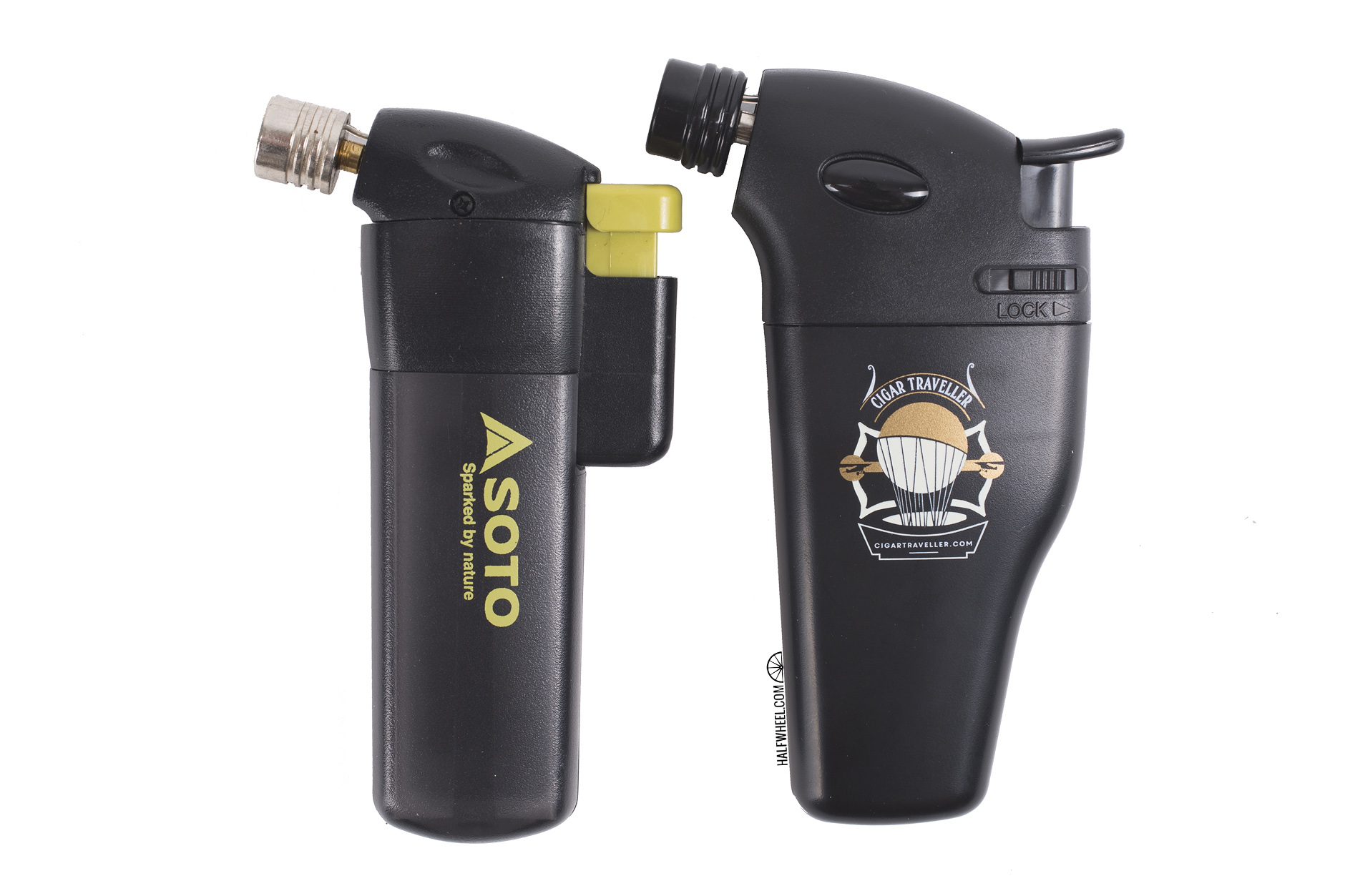
As we’ve seen in recent years, several products have come on the market that are capable of turning the soft flame of a standard convenience store lighter into a hot and powerful single torch—including the SOTO Outdoors PT-14SB Pocket Torch, which I reviewed in October 2014.
[portfolio_slideshow id=118102]
The Cigar Traveller is officially billed as a “lighter to jet flame converter,” a fitting description but one that doesn’t quite capture the relative brilliance of the device. It comes in two models, the CT30 and CT34; while both use the same refillable fuel cell (£3.50, about $5, for two), the CT30 is a bit smaller and more pocket friendly, while the CT34 is slightly wider and can stand upright, just like a typical tabletop lighter. Both the CT30 and CT34 sell for £16.50 ($24) each on the Cigar Traveller website.
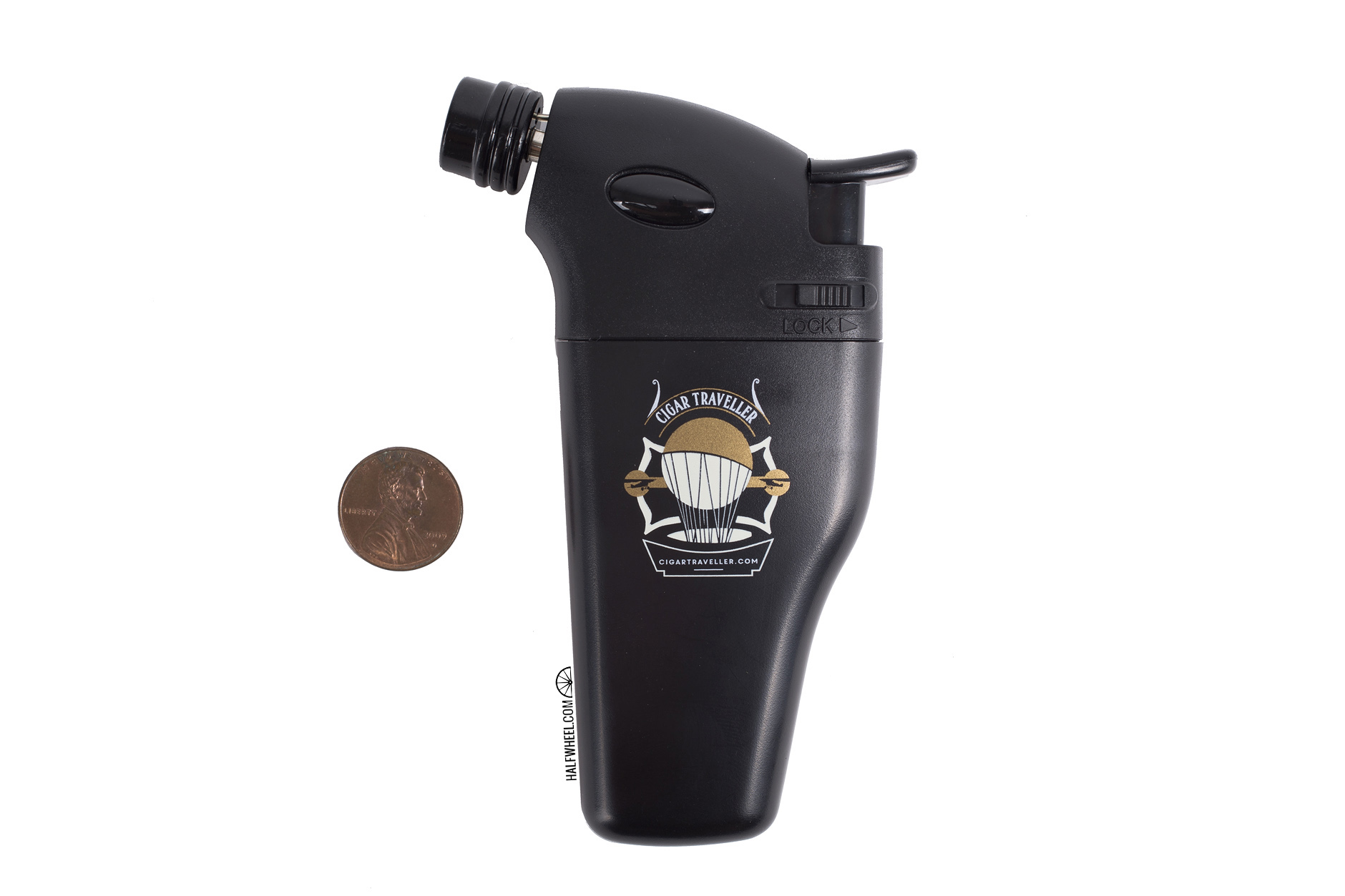
The device is a two-piece plastic shell, inside which a refillable “fuel cell,” which in all honesty appears to be a standard soft flame BIC-style lighter with the flint wheel removed. The top half of the Cigar Traveller aligns with the button that starts the fuel flowing as well as the spot where the flame would normally be, though given that there is no ignition wheel no flame is able to be created, so the butane flows straight up and into the Cigar Traveller. When assembled, pushing down on the CT30’s button gets butane flowing from the fuel cell and then activates a piezo electronic ignition system to get the flame burning. There’s also a safety lock to keep the ignition from being pressed accidentally.
One thing that is almost immediately noticeable is that there is no way to adjust the flame of the Cigar Traveller, at least on the plastic body. Each of the refill cartridges can be adjusted in much the same way as a typical soft-flame lighter, however, with a small lever that moves left and right to adjust the fuel flow. It’s certainly not perfect and doesn’t provide a tremendous amount of adjustment, but operating at the lowest setting still provided plenty of flame, and with the lighter putting out a fairly long torch, I found this to be an added safeguard to keep my fingers and the sides of the cigar from getting burnt. I can tell you that it puts out an incredibly hot flame, and you do not want to get any closer to it than absolutely necessary, as it can reach temperatures upwards of 2,500°F (1,300°C).
After the ignition button is released, fuel will continue to flow and the lighter will still emit a flame, though it will decrease gradually and go out in a matter of seconds, or if you give it a good puff of air to snuff it out. It’s a feature that I’m not crazy about as I hate wasting fuel, but it is a byproduct of the current design of the Cigar Traveller and every similar device I have tried, so it’s not like there is a better option readily available. Plus, given the overall benefit of being able to create a single jet torch lighter from what looks like a soft flame disposable lighter, I’m willing to cut the unit a bit of slack.
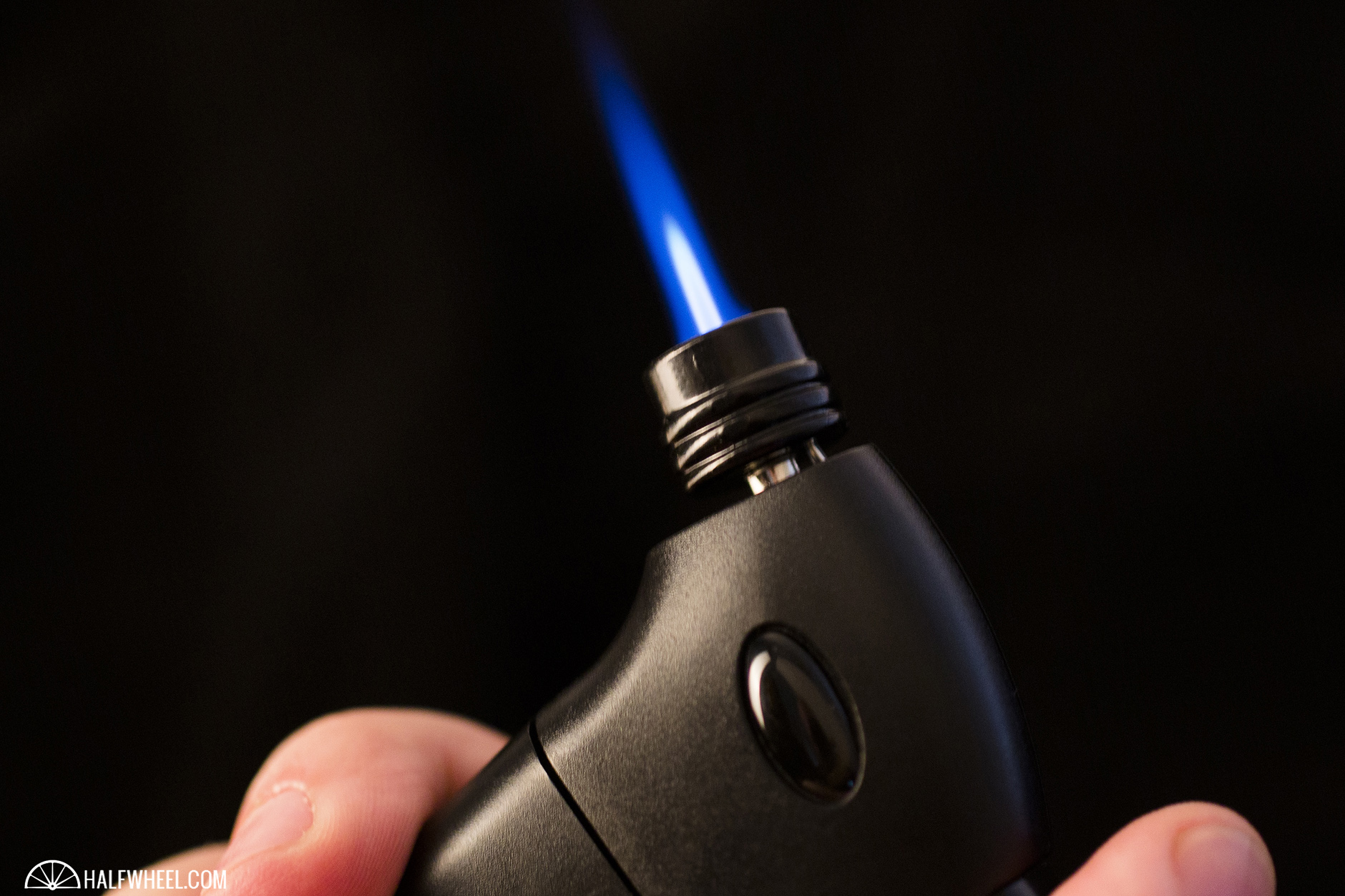
Following several weeks of near daily usage and hundreds of ignitions, the Cigar Traveller continues to perform well. Misfires do happen occasionally but are very sporadic, and given the premise on which this lighter and similar styles are designed, I’m willing to be a bit more forgiving. The unit itself looks good as new and while I’m sure would show some scratches and wear if handled more aggressively, so far it still looks great.
The company says that it is only to be used with the fuel cells they sell, a claim I am somewhat skeptical about as it feels a bit Apple-like when it comes to using off-brand charging cables for your iPhone. That said, they don’t seem to be totally gouging consumers on the price, so I’m not completely outraged by the claim. Plus, given that they are refillable with the same premium butane that your other lighters use, it becomes even less of an issue.
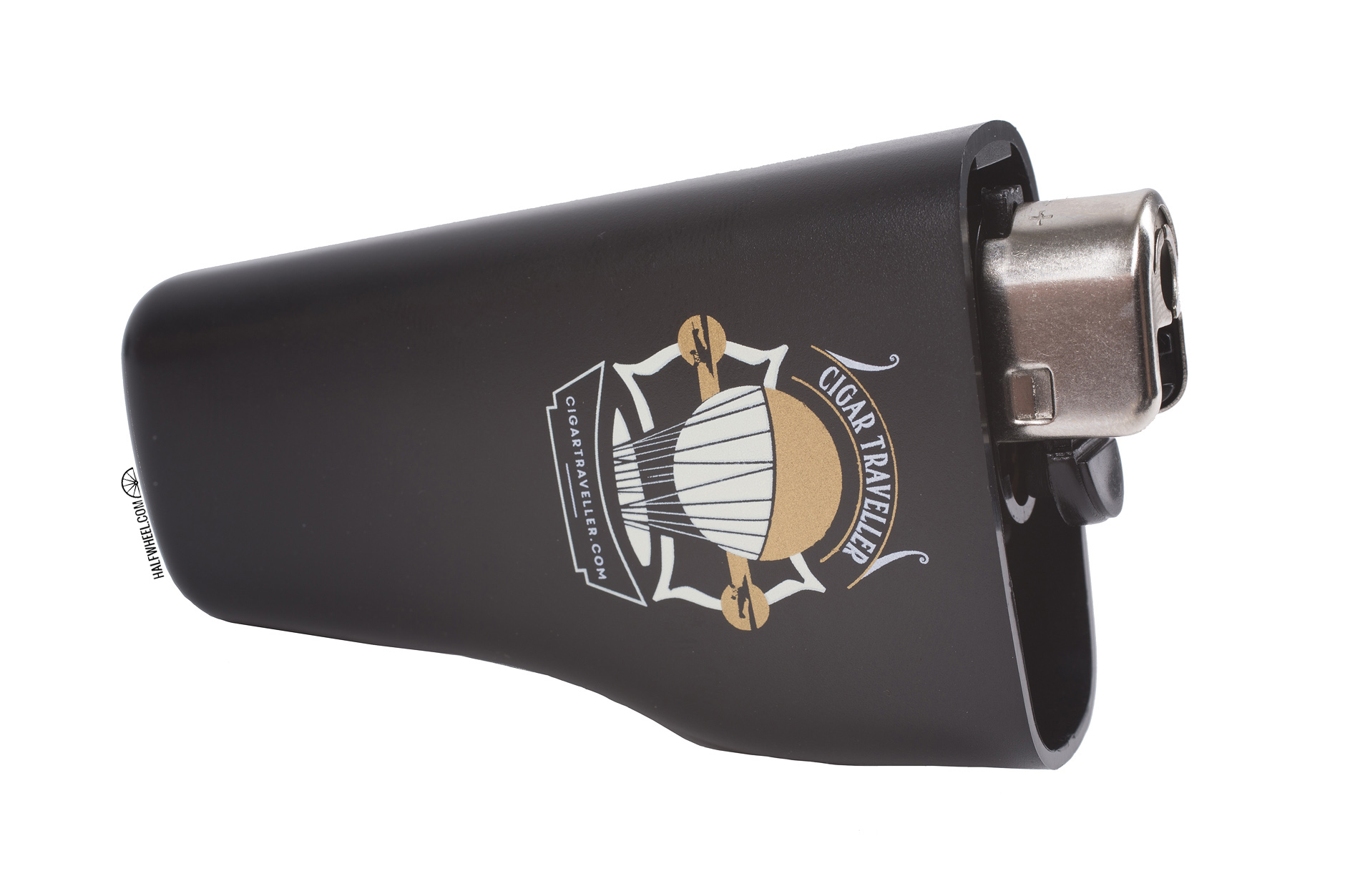
When it comes to refilling the cells, it is as easy as refilling pretty much any torch lighter. On the base of the cell is a familiar looking valve; as with a traditional torch it is best to bleed out the air before refilling it, and a small screwdriver or similar tool will easily do the job. Once the excess air has been let out, grab a can of butane and refilll it as normal. The transparent plastic makes it easy to see how full the cells, and you’re able to get it fairly full before hitting maximum capacity. A full cell is said to last for approximately 30 minutes of burn time, and both the CT30 and CT34 come with one empty fuel cell. It’s enough to light quite a few cigars, but if you’re planning on being on the road for an extended period of time, you’ll either want to have a few extra cells on hand or a way to refill the one(s) you do bring.
When traveling, the company says it is best to remove the fuel cell and keep it separate from the body, which makes sense both to prevent an accidental ignition, but also seemingly to make sure the device won’t get confiscated during travel, as torch lighters are prohibited in carry-on luggage. Which brings us back to the part about traveling with the Cigar Traveller.
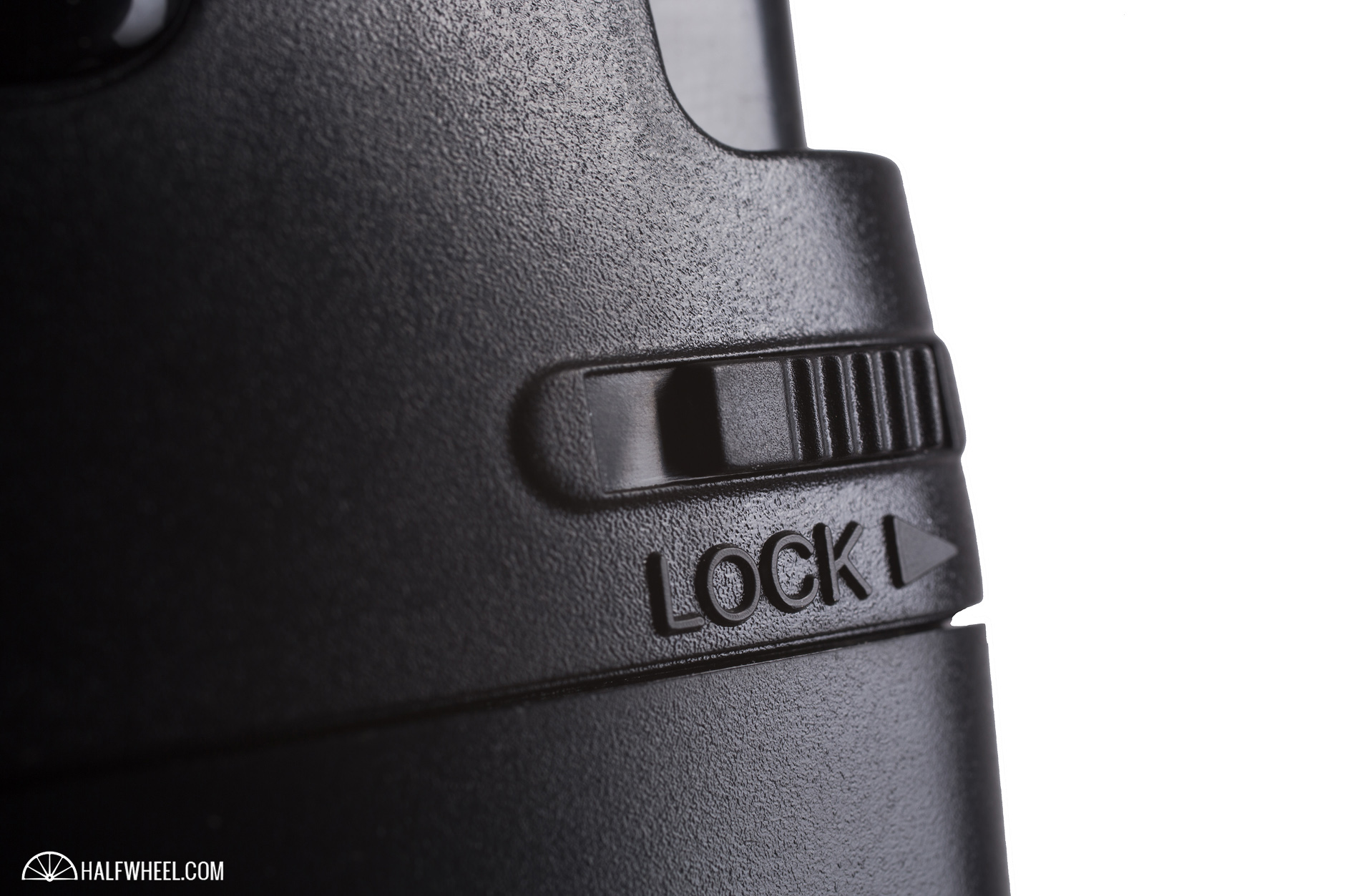
I’ve talked to a number of people who use this or similar devices and have never had issues with it, or when they do it is few and far between, with no serious repercussions. I’m a bit more on the paranoid side of things, however, and would always fear that if this were put in my carry-on luggage, with the fuel cells stored separately, I’d be pulled out of the security line and detained in an office by some unfriendly individuals who would be convinced I was up to something malicious, I’d miss my flight and be forever subject to the dreaded SSSS code on future boarding passes. If I was checking a bag, I’d certainly feel a good bit better about it, though I would worry just a bit that it might get confiscated by an overzealous and undereducated baggage screener.
While I have been skeptical about other such lighters, there really is so much to like about the Cigar Traveller that it is hard, if not impossible to say anything against it other than that it isn’t a traditional and pocket-friendly lighter. If you travel and absolutely have to have a torch lighter, and you don’t want to have to find one when you arrive, the Pocket Traveller is a great option. It also makes a pretty reasonable option as a primary lighter, should you have an affinity for its overall style and functionality. It’s not the cheapest single flame on the market, but if you wanted to have just one lighter that you could use both at home and on the road, the Cigar Traveller would certainly make some sense. I’m still a bit hesitant to fly with it, but may just give it a try during my upcoming travels.
The lighter and fuel cells for this review were purchased by halfwheel.



